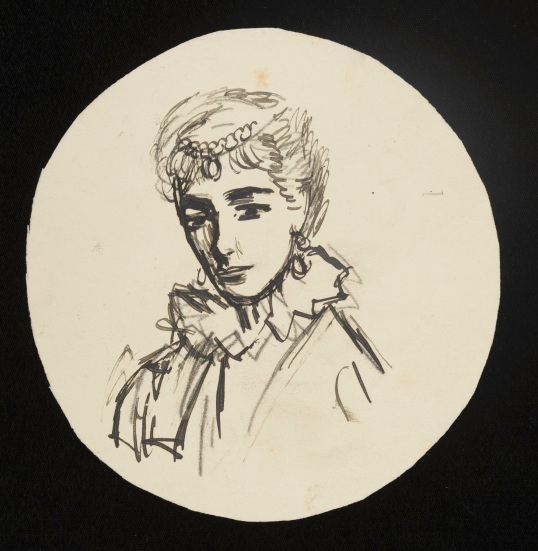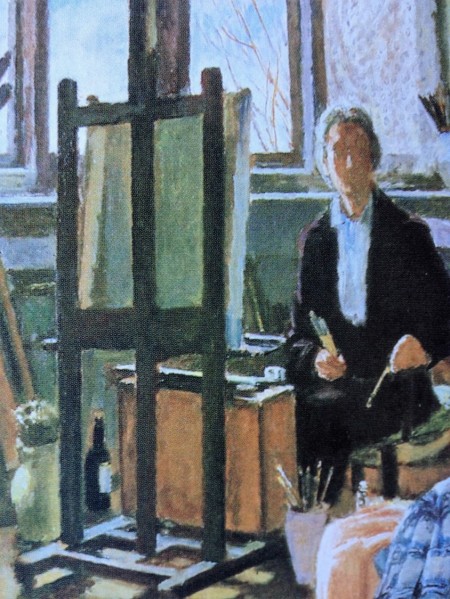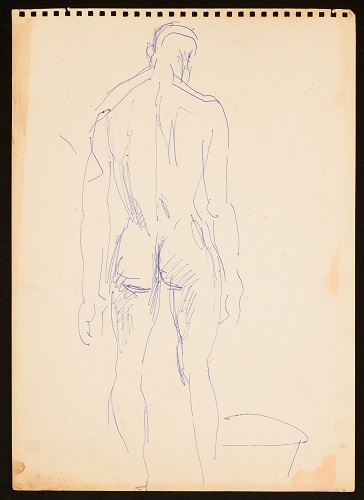Charleston Attic Spotlight Talks
As our days in the attic draw to a close, so too does this significant project. Being the last in a series of Curatorial Interns over the past 3 years, we take a moment to reflect on the achievements of our residency. In six months we have completed cataloguing and archiving the final 3,600 objects, something which at the start of our tenure seemed like a daunting challenge. Having seen such a vast array of sketches, paintings and unfinished works, our own interests in the collection were bound in intrigue and a desire to know more.
With the end of our tenure comes a free spotlight talk, where we each discuss an area of research that has been inspired by the Angelica Garnett Gift. Starting at 1pm on Thursday 28 September 2017, the event will take place in the large marquee at Charleston Farmhouse, Firle. The talks are free and open to all.
The Famous Women Dinner Service: Fashion, Modernism and Identity – Vanessa Jones
Designed by Vanessa Bell and Duncan Grant in 1932 – 1934, the Famous Women Dinner Service re-appeared to the art market earlier this year. As the Angelica Garnett Gift holds nine preliminary sketches of the Famous Women, it seemed like the perfect opportunity to unravel some of the mysteries that go along with this bewildering representation of celebrated women. My research will focus on four of the preparatory sketches exploring their existence mediating between fashion and art history. I establish Bell and Grant as prolific modern artists and unravel the usefulness of using fashion as a tool to date and identify the character on the plate. I also explore the artistic approaches Bell and Grant use, from preliminary sketch to final design.

CHA/P/1646, Portrait of Sarah Bernhardt for the Famous Women Dinner Service, c. 1933, pencil on card © Charleston Trust
Looking inside Vanessa Bell’s Studio – Diana Wilkins
I will be exploring the history of Vanessa Bell’s attic studio. For the last six months the attic studio has been our working space for cataloguing the Angelica Garnett Gift of paintings and drawings by Bell and Duncan Grant. It has been a privilege to work in this unique space which bears tangible traces of Bell’s past presence. I will use photographs and documents from Charleston’s archive to explain why the attic studio was created in 1939, how it was constructed and the influence of the studio environment on Bell’s work in the later stages of her career. I will look at the scope for returning the room to its previous condition once our archiving project has come to an end.

Vanessa Bell, 1952, The Artist in her Studio, private collection,
© Estate of Vanessa Bell, courtesy Henrietta Grant
Many thanks to the Heritage Lottery Fund, Elizabeth Keyser Foundation, Michael Marks and the Paul Mellon Centre for supporting this project.




